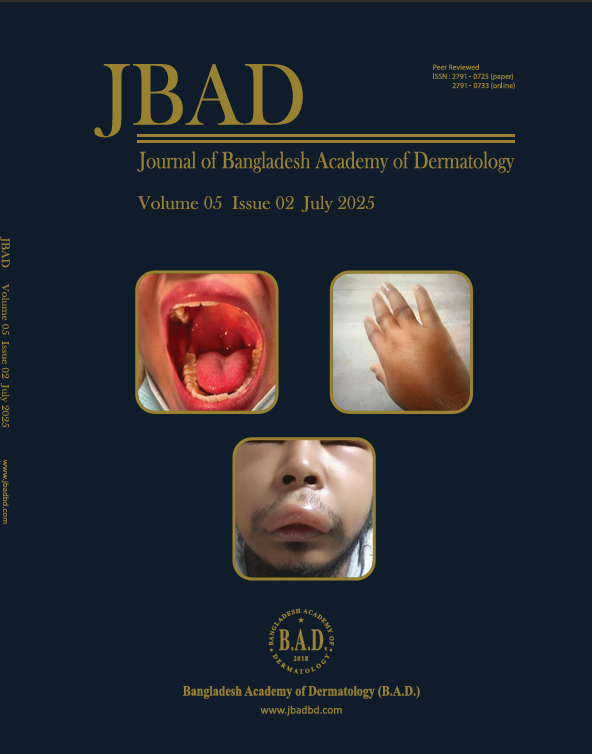Original Article
Study of common allergens for United Airway Disease by skin prick test: A single center study
Author Details
1. Professor, Department of Respiratory Medicine, BSMMU, Dhaka, Bangladesh
2. Department of Dermatology and Venerology, BSMMU, Dhaka, Bangladesh
3. Department of Respiratory Medicine, BSMMU, Dhaka, Bangladesh
4. Department of Respiratory Medicine, BSMMU, Dhaka, Bangladesh
5. Department of Cardiology, BSMMU, Dhaka, Bangladesh
Abstract Background: United Airway Disease (UAD) encompasses allergic rhinitis and bronchial asthma, sharing common immunopathological mechanisms and environmental triggers. Identifying region-specific aeroallergens is essential for effective diagnosis and management. This study aimed to identify the most prevalent inhalant allergens in UAD patients using skin prick testing at a tertiary care center in Dhaka, Bangladesh. Methods: A cross-sectional observational study was conducted at the Department of Respiratory Medicine, Medicine, Dermatology and Venereology, Bangabandhu Sheikh Mujib Medical University (BSMMU) from March 2017 to February 2018. A total of 100 patients diagnosed with allergic rhinitis and/or bronchial asthma underwent skin prick testing with 62 allergen extracts, including pollens, fungi, insects, dust, animal dander, fabric, and miscellaneous allergens. Positive reactions were assessed 15 minutes post-application, with a wheal size of +2 or greater considered significant. Results: Among 100 participants, 43% had allergic rhinitis, 22% had bronchial asthma, and 35% had both conditions. The majority of patients were aged 21-30 years (44%) and were predominantly male (58%). Pollens were the dominant allergens occurring in over one third of patients (32%). This was followed by dust mites (Dermatophagoides farina) showing a 23% positivity rate. Insect allergens, particularly female cockroach (16%) and male cockroach (12%), also showed high reactivity. House dust (19%) and paper dust (19%) were prevalent dust allergens. Fungal allergens like Aspergillus fumigatus (10%) and textile allergens such as Kapok cotton (10%) were also notable. These findings reveal a significant overlap between allergic rhinitis and bronchial asthma, with varied sensitivities to different allergens. Conclusion: The findings demonstrate a significant overlap in allergen sensitivity between the upper and lower airways, supporting the UAD concept. Early identification of common allergens through skin prick testing can guide targeted interventions and personalized immunotherapy, improving outcomes for patients with allergic airway diseases in Bangladesh. Keywords: Asthma, United Airway Disease, Skin Prick Test, Aeroallergens, Bangladesh |
Keywords: Asthma, United Airway Disease, Skin Prick Test, Aeroallergens, Bangladesh

